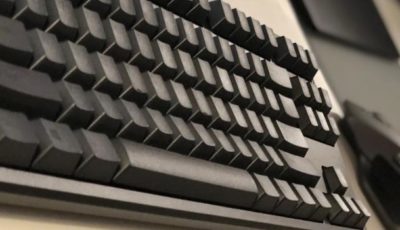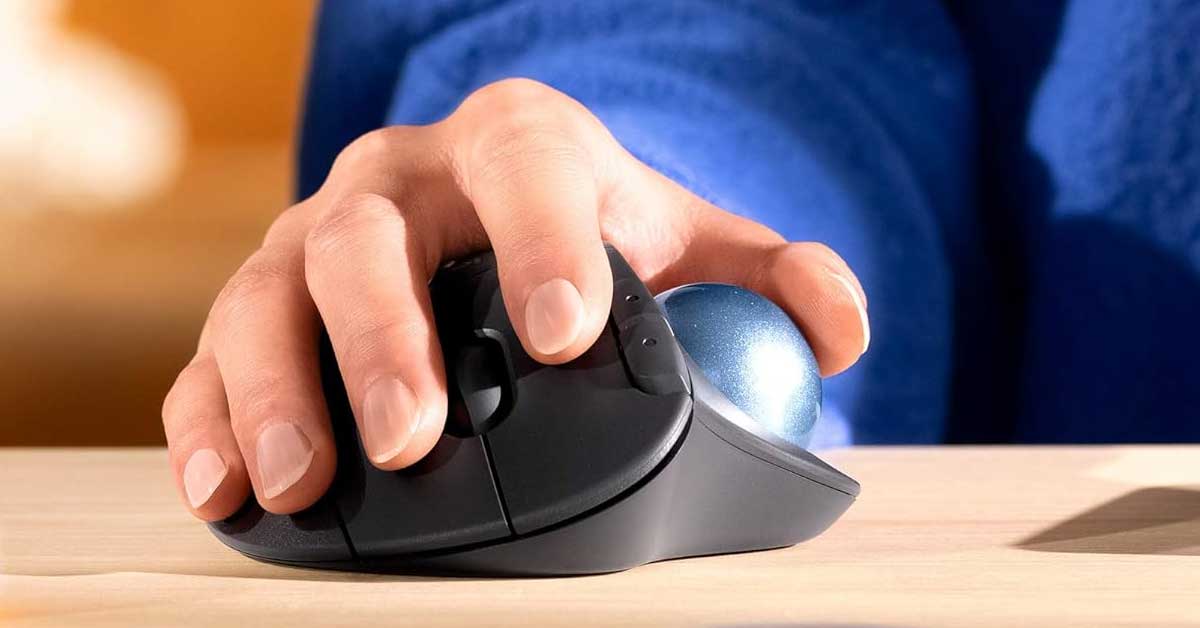
As you navigate the digital seas of the 21st century with the finesse of a seasoned cartographer, you might find yourself in need of a reliable wireless trackball mouse, a device that marries the precision of yesteryear with the cordless technology of today.
You’re looking for a tool that not only fits snugly in your palm but also offers the freedom to work from any nook or cranny of your workspace. Among the plethora of options, the Logitech MX Ergo stands tall as a testament to ergonomic design and functionality, while its sibling, the ERGO M575, serves as a close contender.
If your budget is tight, the Nulea M501 might catch your eye, and for those seeking the road less traveled, the ELECOM HUGE could be a revelation. But how do you sift through these choices to find the one that clicks with you?
The answer lies in considering a few key factors that will enhance your day-to-day interaction with your digital world. Stay tuned to uncover the nuances that will lead you to your perfect match.
Best Overall: Logitech MX Ergo
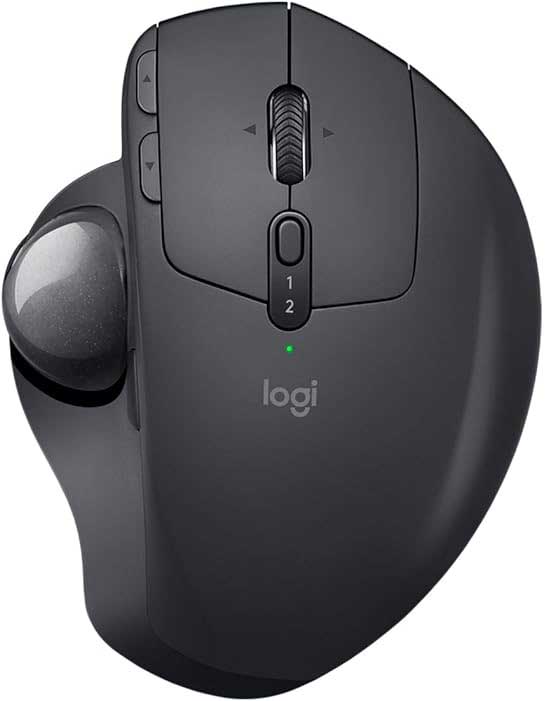
Boasting an ergonomic design that minimizes muscle fatigue, the Logitech MX Ergo Wireless Trackball Mouse stands out as the best overall choice for comfort and advanced functionality.
You’ll appreciate the precision scroll wheel with horizontal scrolling and middle click, which enhances your navigation experience. The advanced precision-mode tracking allows you to switch between accuracy and speed, tailoring the mouse to your specific tasks.
The Logitech MX Ergo takes multitasking to the next level with its multi-computer workflow. Thanks to Logitech FLOW technology, you can seamlessly control and transfer files between two computers. Plus, with up to four months of battery life from a single USB-C charge, you won’t be constantly searching for a power source. And when you need to recharge, it’s hassle-free.
Compatibility won’t be an issue as the MX Ergo offers dual connectivity and works with Windows and Mac operating systems. You can even customize shortcuts to boost your productivity using the intuitive Logi Options+ software.
At 5.8 ounces, this trackball mouse is designed to be a durable and reliable workhorse. Customers consistently praise its comfort, ease of use, and impressive battery life. While it’s priced higher than some of its competitors, the investment in the Logitech MX Ergo is justified by its superior design and features.
If you ever find a lower price or have feedback, you’re encouraged to share it. And remember, Amazon’s return policy and warranty have got you covered. Personal experience suggests that with proper maintenance, this trackball mouse will serve you well for years to come.
Best For: Users seeking an ergonomic mouse to enhance comfort and productivity, especially those frequently switching between multiple computers.
Pros:
- Ergonomic design reduces muscle strain and fatigue during extended use.
- Advanced features like precision-mode tracking and Logitech FLOW technology enhance productivity.
- Long battery life and USB-C charging provide hassle-free use for months on a single charge.
Cons:
- Higher price point compared to other trackball mice on the market.
Best Runner-Up: Logitech ERGO M575
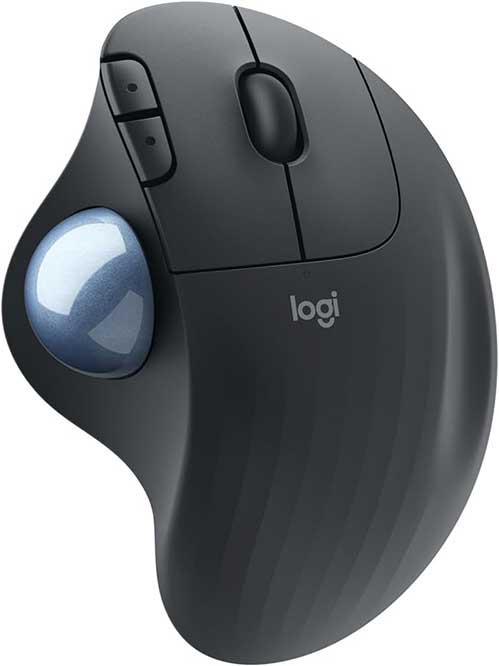
If you’re in search of ergonomic comfort coupled with precision control for your tight workspace, the Logitech ERGO M575 Wireless Trackball Mouse emerges as an excellent runner-up choice.
This meticulously designed mouse cradles your hand and arm, offering a relaxed posture while its smooth thumb-operated trackball ensures accurate tracking. You won’t find yourself struggling with space again, thanks to its compact build.
The ERGO M575 isn’t just about comfort; it’s also about versatility. It connects seamlessly via Bluetooth or the included USB receiver, compatible with multiple operating systems including Windows, macOS, Linux, iPadOS, and Android.
With an impressive 24-month battery life, you’re set for the long haul. The convenient controls further enhance your experience, making it a top-notch pick for both performance and durability.
Best For: Individuals looking for an ergonomic mouse solution that saves space without sacrificing functionality and is compatible across various operating systems.
Pros:
- Ergonomic design reduces strain on hand and arm during extended use.
- Long battery life of 24 months minimizes the hassle of frequent replacements.
- Multi-OS compatibility ensures it works with almost any system you may have.
Cons:
- May take time to get used to the thumb-operated trackball for those new to trackballs.
Best Budget: Nulea M501
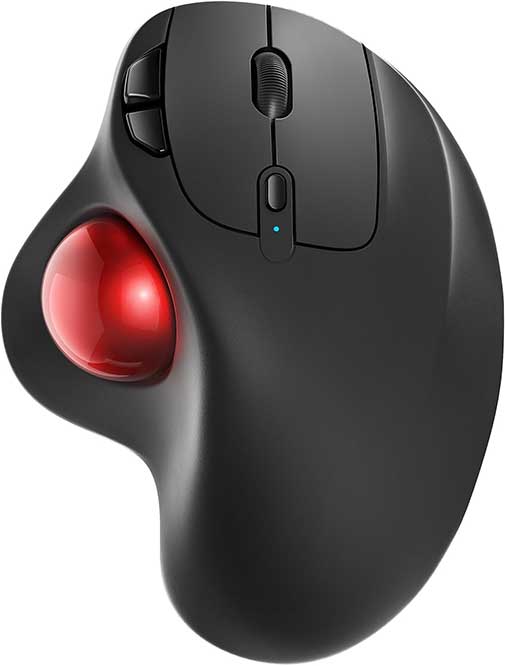
For budget-conscious consumers looking for ergonomic comfort and precision, the Nulea M501 Wireless Trackball Mouse stands out with its smooth thumb control and versatile connectivity options.
Its precise tracking is customizable with adjustable DPI settings, catering to your specific needs. You’ll experience true wireless freedom, seamlessly connecting up to three devices via Bluetooth or a USB dongle. Plus, you can effortlessly switch between your PC, laptop, iPad, Mac, or Windows device.
The rechargeable battery offers long-lasting use, while the six-button design enhances performance. Weighing only 4.5 ounces with dimensions that ensure a comfortable fit, this trackball mouse is praised for its ergonomic build and ease of use.
With a 4.3-star rating from nearly 7,000 reviewers, the Nulea M501 isn’t only pocket-friendly but also a top performer in its category.
Best For: Users seeking an affordable, ergonomic trackball mouse with multi-device connectivity and customizable precision.
Pros:
- Ergonomic design with smooth thumb control ensures comfort for extended use.
- Versatile connectivity options with the ability to connect up to three devices via Bluetooth or USB dongle.
- Long battery life with a rechargeable Lithium Ion battery and a high-performance six-button layout.
Cons:
- Some users have reported issues with the trackball waking from sleep mode.
Best Alternative: ELECOM HUGE
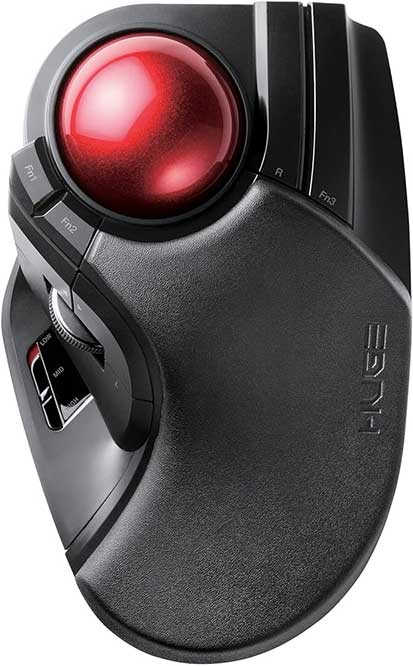
With its precision optical tracking technology and eight convenient buttons, the ELECOM HUGE is an ideal choice for users seeking a comfortable and functional wireless trackball mouse experience.
This well-regarded alternative boasts a DPI cursor with adjustable sensitivity, ensuring you have the precision needed for a variety of tasks. It’s not only compatible with Windows and macOS, but it’s also a breeze to maintain thanks to its smooth ball and large ball bearings.
Weighing in at just over half a pound, the ELECOM HUGE is substantial enough for steady control, yet light enough for extended use. It’s powered by a single AAA battery, which is included, so you can get started right away.
And with strong customer feedback and a solid 4.2 out of 5 stars rating, it’s clear that this trackball mouse holds its own in the market.
Best For: Individuals who require precise cursor control and comfortable ergonomics for extended computer use.
Pros:
- High precision with adjustable DPI for various tasks
- 8 buttons for enhanced functionality and easy navigation
- Compatible with both Windows and macOS systems
Cons:
- Might be heavy for some users at 9.1 ounces
Factors to Consider When Selecting a Wireless Trackball Mouse
When selecting a wireless trackball mouse, it’s essential to consider factors such as ergonomics, sensor accuracy, button layout, and compatibility with your operating system.
Your comfort is paramount, especially during long work sessions. Look for a trackball that fits the natural shape of your hand and supports your wrist and arm. The angle of the device can also be a game-changer, as some models offer a more vertical position to reduce strain.
Sensor accuracy is critical for precision tasks. You’ll want a mouse that tracks movement seamlessly, without lag or jitter. Check the DPI (dots per inch) rating—the higher the DPI, the more sensitive the mouse, which can be a boon for graphic design and gaming.
Next, examine the button layout. It should be intuitive, with easily accessible buttons that can be customized to your liking. Some trackballs offer a plethora of buttons, which can be a blessing for productivity if you’re a fan of shortcuts.
Don’t forget about compatibility. Your trackball must play well with your operating system, whether it’s Windows, macOS, or Linux. Confirm that the manufacturer provides adequate drivers and software for your platform to ensure a smooth experience.
Also, consider connectivity options. Most wireless trackballs connect via Bluetooth or a USB receiver. Check for connectivity range and battery life to ensure it meets your needs, particularly if you’re always on the go.
Lastly, think about the build quality and warranty. A durable trackball can withstand the rigors of daily use, and a solid warranty offers peace of mind.
Frequently Asked Questions
How is the Battery Life Compared to a Traditional Wireless Mouse?
You’ll find that a wireless trackball mouse can drain batteries quicker than a standard wireless mouse due to its additional tracking technology, so you might need to replace batteries more often.
Can Wireless Trackball Mice Be Used Effectively for Gaming, and if So, Which Models Are Recommended?
You can effectively use wireless trackball mice for gaming; recommended models include the Logitech MX Ergo for its precision and the Kensington Expert Mouse for its customizable buttons.
Are There Ergonomic Benefits to Using a Wireless Trackball Mouse for Users With Carpal Tunnel Syndrome or RSI (Repetitive Strain Injury)?
You’ll find that using a wireless trackball mouse can alleviate wrist movement, potentially offering relief if you’re dealing with carpal tunnel syndrome or RSI, due to its stationary design.
How Do They Perform on Different Surfaces, Such as Glass or High-Gloss Desks, Compared to Regular Mice?
You’ll find wireless trackball mice excel on varied surfaces, including glass or glossy desks, where traditional mice might struggle with accurate tracking due to their reliance on sensor detection of surface texture.
What Are the Options for Left-Handed User and Are They as Widely Available as Right-Handed Versions?
You’ve got fewer options for left-handed wireless trackball mice, but they’re out there. They’re not as common as right-handed versions, so you might need to search a bit harder to find one.
Conclusion
You’ve got the scoop on the top wireless trackball mice now. Whether you’re investing in the unparalleled comfort of the Logitech MX Ergo, saving some cash with the Nulea M501, or trying something unique with the ELECOM HUGE, you’re set for smooth scrolling.
Always weigh your needs against features like ergonomics, battery life, and connectivity. Here’s to finding your perfect match for a clutter-free, comfortable desktop experience. Happy clicking!
